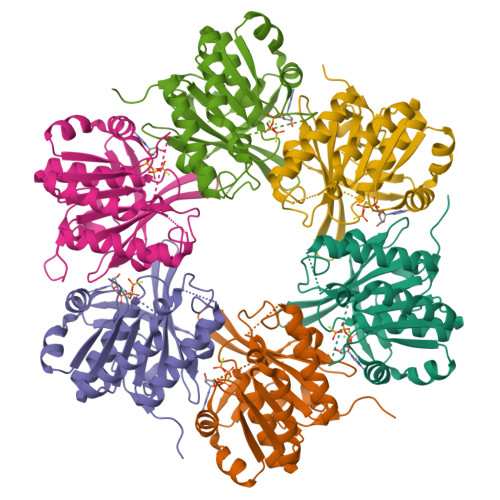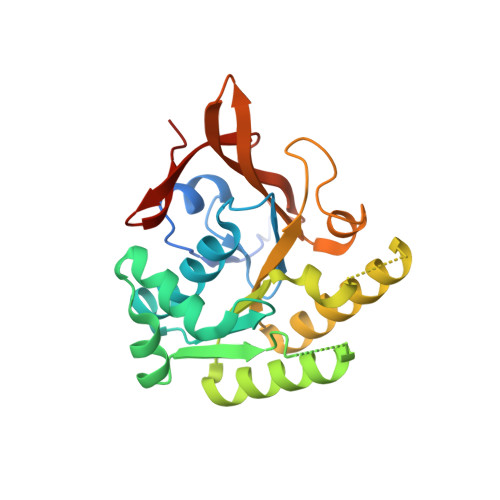Circadian rhythms. Atomic-scale origins of slowness in the cyanobacterial circadian clock.
Abe, J., Hiyama, T.B., Mukaiyama, A., Son, S., Mori, T., Saito, S., Osako, M., Wolanin, J., Yamashita, E., Kondo, T., Akiyama, S.(2015) Science 349: 312-316
- PubMed: 26113637
- DOI: https://doi.org/10.1126/science.1261040
- Primary Citation of Related Structures:
4TL6, 4TL7, 4TL8, 4TL9, 4TLA, 4TLB, 4TLC, 4TLD, 4TLE - PubMed Abstract:
Circadian clocks generate slow and ordered cellular dynamics but consist of fast-moving bio-macromolecules; consequently, the origins of the overall slowness remain unclear. We identified the adenosine triphosphate (ATP) catalytic region [adenosine triphosphatase (ATPase)] in the amino-terminal half of the clock protein KaiC as the minimal pacemaker that controls the in vivo frequency of the cyanobacterial clock. Crystal structures of the ATPase revealed that the slowness of this ATPase arises from sequestration of a lytic water molecule in an unfavorable position and coupling of ATP hydrolysis to a peptide isomerization with high activation energy. The slow ATPase is coupled with another ATPase catalyzing autodephosphorylation in the carboxyl-terminal half of KaiC, yielding the circadian response frequency of intermolecular interactions with other clock-related proteins that influences the transcription and translation cycle.
Organizational Affiliation:
Research Center of Integrative Molecular Systems (CIMoS), Institute for Molecular Science, 38 Nishigo-Naka, Myodaiji, Okazaki 444-8585, Japan.



















